Plants at the marsh I blogged previously about the California…
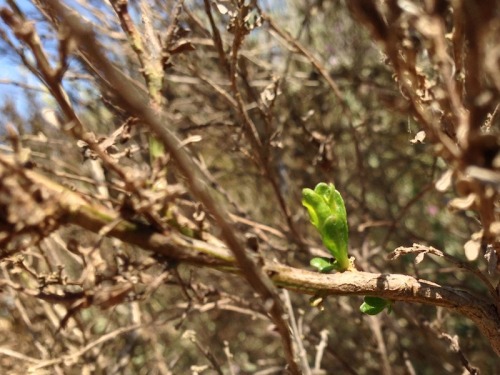
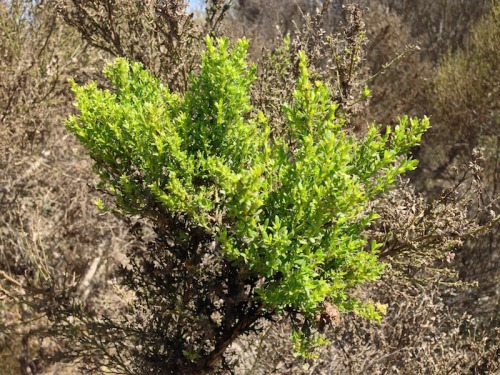
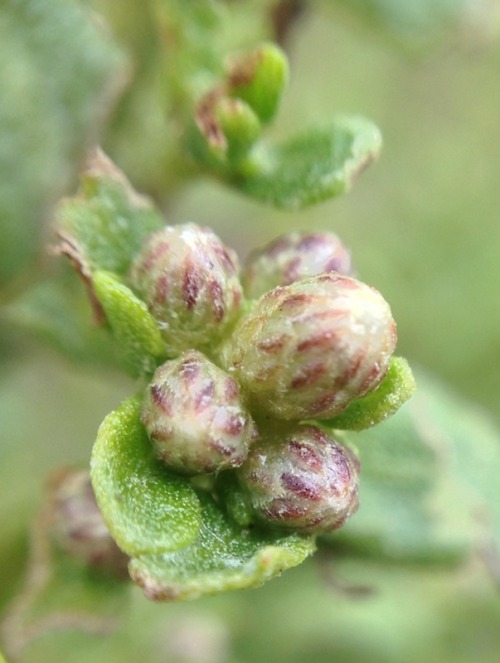
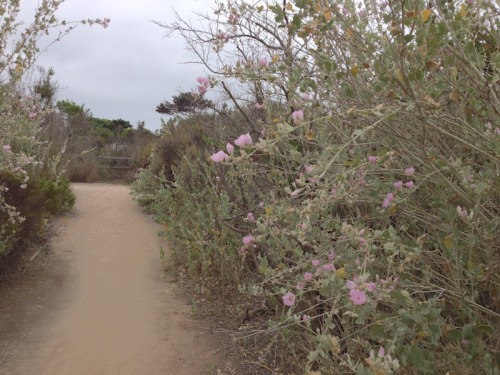
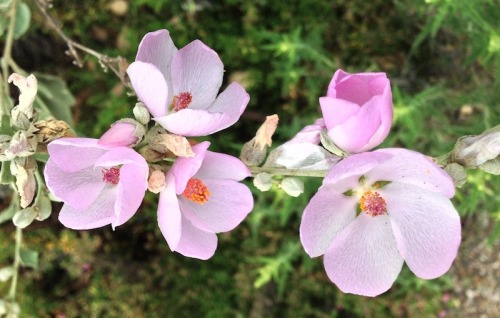
Plants at the marsh
I blogged previously about the California Phenology Project, and how I’m keeping track of some plants at the Carpinteria salt marsh as part of it. I thought I’d share a quick update.
One of the tricky things about doing phenology in southern California is that our plants don’t follow the familiar four-season cycle that occurs in places like New England. New England plants are all about the temperature. Plants leaf out in the spring, grow through the summer, flower and fruit in the fall, then drop their leaves and become dormant for the winter.
In southern California, at least in the coastal zone where I live, temperature isn’t as big a factor. Precipitation is much more important. Almost all our rain falls in the winter and early spring, followed by a long, dry summer and fall. Coyote brush, one of the plants I’m tracking, has a particularly weird (by northeastern U.S. standards) growth calendar. It might start leafing out after a heavy winter rain, then just stop, with its leaves half-grown, until months later when it will have another spurt of vegetative growth.
It can be tricky distinguishing “young leaves” (which have a technical definition for phenology purposes) from older leaves, especially on a plant like coyote brush where new leaves can appear at any time. One thing that’s helped me is that a number of my plants had all their leaves eaten earlier this year during an outbreak of green leaf beetles, Trirhabda flavolimbata.
Back in May when I started the project, four of my six coyote brush plants had no leaves at all. Now, though, all four have started putting out new leaves. The first row of images above shows three of my study plants, the first two (plants #3 and #4 from the study) with newly emerged leaves. The third shot is of plant #6, one of the two plants in my study that didn’t get completely defoliated by the beetles. Plants #5 and #6 are off to one side of the study area, and though the beetles eventually made it that far they didn’t do as much damage to those plants. Now #6 has emerging flower buds, and I’ve learned something I didn’t know before: which gender it is.
Coyote brush is dioecious, meaning plants either have all male flowers or all female flowers. Or, as I explain it to the fourth graders who take the marsh tour sometimes, there are boy plants and girl plants.
Coyote brush #6 is a boy plant. The flower buds haven’t opened yet, but you can see that they have the rounded shape of male buds, rather than the pointed shape of female buds. Besides, the male flowers emerge first. All the coyote brush I’ve seen with flower buds at the marsh this year have been male plants. Over the next few weeks those buds will swell and open, revealing the yellow disks of the male flower. The female plants will flower soon after.
Plants flower throughout the year at the salt marsh, with different species flowering at different times. The coyote brush is just getting started, but another species, the chaparral mallow (Malacothamnus fasciculatus) is in full bloom. In some ways the late summer is my favorite time to lead the marsh docent tours, because I get to take people down the walk to the amphitheater when it is lined with the beautiful purple flowers of the chaparral mallow. The bottom two images above give you a sense of what that’s like, but the photos don’t do it justice. You have to be there to get the full effect.
I love those plants.
Reposted from http://lies.tumblr.com/post/57850486041.
Tags: Carpinteria Salt Marsh, Baccharis pilularis, Malacothamnus fasciculatus.
